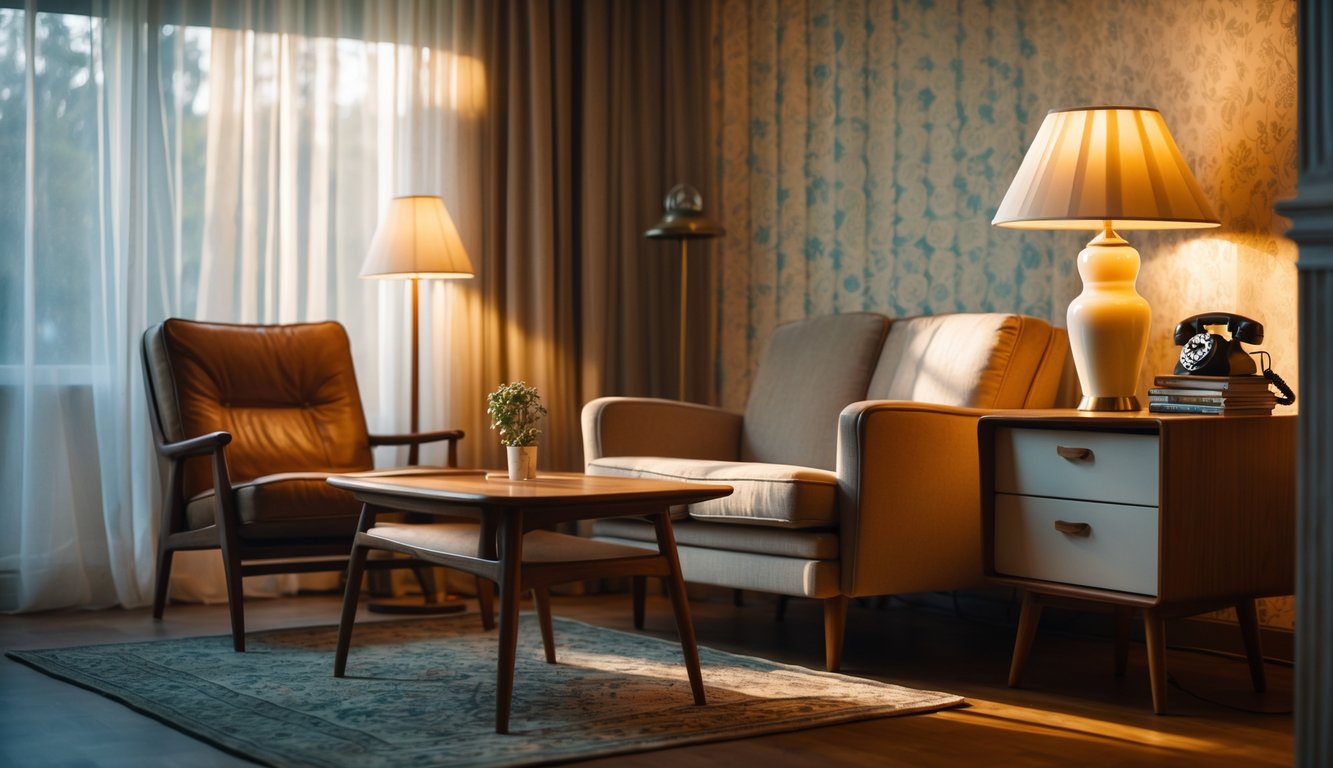
The Future of Vintage: Classic or Passing Fad?
White tee, faded ‘90s blazer, tripped over my own closet this morning. Everyone’s obsessed with what’s “timeless” or just Instagram filler. My friend’s cousin wore a crushed velvet slip dress to brunch—I saw that exact dress in a thrift bin in 2011. People claim some vintage styles are “eternal,” but then they wore Crocs last year. Experts predict trends will stick, but every runway show acts like yesterday’s hand-me-downs are tomorrow’s treasures. I don’t buy it.
Will Certain Styles Stand the Test of Time?
Fashion textbooks (yes, they exist) claim “timeless” means sharp tailoring—wide blazers, classic Levi’s. But then every other scroll is someone calling 1980s metallics “essential.” Vintage fashion forecasts put Armani and Lacroix everywhere, so resale is apparently the new red carpet.
Maria Bernard (I do stalk her) says boxy coats, pencil skirts—those always come back. Even if buyers say slick minimalism is “timeless,” someone’s out there in deadstock ‘70s denim looking cooler than anyone in designer. Tried on three “iconic” vintage jackets last week—only one didn’t smell like a 1994 attic. Gross. Lower-quality polyester? Fashion students bet it’ll vanish soon, hype or not. Eco-shoppers still want wool and silk, not disco polyester.
I trust what I see at the store, not just classic comeback hype. If your grandma hid it for 20 years and it’s now $200 on Depop, that’s vintage. Puffy ‘80s sleeves? Someone says they’re back—I saw it on TikTok—but would I wear one to a meeting? Absolutely not.
Frequently Asked Questions
Vintage fads vanish, seasons pivot, anxiety about buying the “right” thing never stops. I keep digging out trends right before they die—last spring’s “must-have” now feels embarrassing.
What vintage fashion trends are on the verge of becoming obsolete?
Saw someone trying to sell low-rise cargo jeans and butterfly tops from the early 2000s—does anyone buy those? Stylists I talk to (and expert breakdowns for 2025) say the Y2K look is fading, but thrift stores still price mesh tops like they’re rare art.
Lines get blurry; mesh and synthetics get swapped for cotton and silk, and then what—everything’s just gone? Knockoff logo tees crashed out faster than I expected. Nostalgia can’t save everything once people start caring about what’s real.
How do vintage styles evolve with the changing seasons?
Is spring about trench coats, or does someone just decide pastels matter again? At the start of March, oversized plaid blazers were everywhere, then micro florals took over—probably thanks to TikTok edits and “digital immediacy” (whatever that means).
Colors change brutally fast. My friend loves mohair in autumn, but suddenly everyone wants linen in summer and pretends they like wrinkles. I ignore most “seasonal must-haves” unless I see buyers picking them up at market week.
Are we seeing a decline in the popularity of vintage apparel?
Depends what “vintage” means. Vintage purchases are up at local shops, but prices are so wild my friends just go back to fast fashion out of spite. Celebrities wear archival Chanel, but regular buyers get priced out.
Online, “vintage” now means anything from 2012, which is just sad. Quantity’s up, quality? Not so sure. Polyester slip dresses marked “deadstock” don’t count, sorry.
What is the future of vintage aesthetics in the fashion world?
Nostalgia just cycles—one month it’s Saul Bass prints, next it’s beaded bags from the silent era. Designers can’t agree on which decade rules. Analyses say vintage keeps creeping in because of sustainability panic.
If “sustainability” still means anything, old styles won’t vanish—they’ll just get called “reclaimed” or “revived.” Don’t expect last season’s peplum to become a collectible, no matter how many times someone says “archival.”
Can vintage fashion truly be considered a timeless choice?
I’ve lost count of how many times I’ve heard that a Burberry trench or black slip dress will “never go out,” only for them to disappear for years. “Timeless” feels like a sales pitch. Even Chanel bags take breaks.
Stylists I trust swear some silhouettes always return, even when designers ignore them. Fashion is circular, not static. Maybe white t-shirts are timeless—until a new detergent trend says synthetics are better.
What impacts consumer enthusiasm for purchasing vintage pieces?
Okay, so, why do people suddenly freak out and drop hundreds (or thousands?) on a “vintage” thing that was, like, $80 last year? I honestly don’t get it. Is it just the hype? I mean, inflation’s real, but then you’ve got Instagram shoving FOMO in everyone’s face, and now there’s this weird eco-guilt—like, you’re saving the planet if you buy a moth-eaten tee from 1994. Some report somewhere (don’t ask me which one, I just clicked it once) says sellers jack up prices and, apparently, there’s never enough supply, so you’ve got desperate people fighting over a pair of Levi’s that probably smell like attic. Cool.
And, honestly, what’s up with the whole “vintage” label? Half the stuff on resale apps is just cheap knockoffs—like, I ordered a ‘90s Tommy jacket and I swear the tag was glued on with school paste. Bargain hunters? Yeah, good luck. They’re out here getting trampled by collectors who treat eBay like a blood sport. My cousin bought some Galliano dress from the mid-‘90s (I think? Or was it early 2000s? Who even knows anymore) and now she’s convinced it’ll pay off her student loans. Meanwhile, she mostly just posts mirror selfies and yells at me about “authenticity.” Whatever that means.